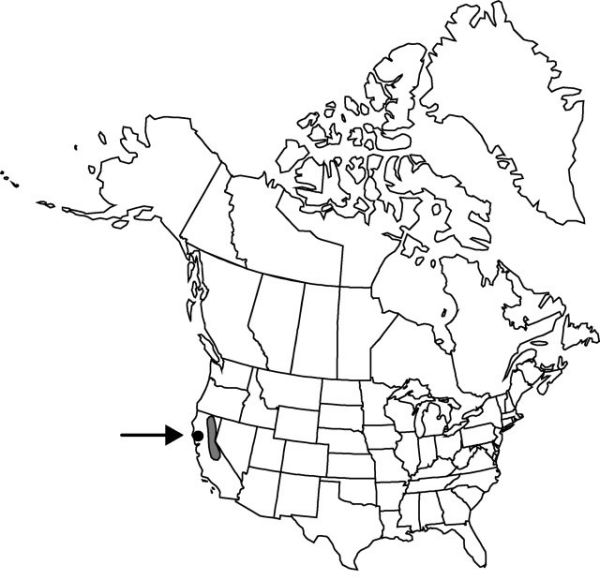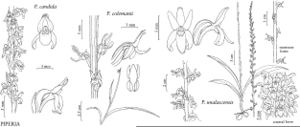Piperia colemanii
Lindleyana 8: 89, figs. 1, 2. 1993.
Plants 16–53 cm. Stems attenuate toward tuberoid, 0.9–3(–3.7) mm diam. distal to leaves; bracts 0–2(–4). Leaves erect, folded, narrow, rather grasslike; blade 6–16 × 0.3–1(–1.9) cm. Inflorescences usually sparsely flowered, (6–)9–30(–40) cm; rachis usually longer than peduncle; bracts 3–16(–25) mm. Flowers translucent green, unscented; sepals 2–4 × 0.8–2 mm; dorsal sepal projecting between petals; lateral sepals strongly recurved; petals erect-recurved to sigmoid, ± falcate, linear-lanceolate, 2.2–4.5 × 0.7–1.7 mm; lip projecting, strongly upcurved, subhastate, triangular-lanceolate, 2–3(–5) × 1.2(–3) mm, apex sometimes touching dorsal sepal; spur ± club-shaped, 1–2.5 mm, always shorter than lip; viscidia broadly ovate, 0.2–0.25 × 0.15–0.2 mm; rostellum blunt. Capsules 3–9 mm. Seeds cinnamon brown.
Phenology: Flowering Jun–Aug.
Habitat: Open coniferous forests and chaparral
Elevation: 1300–2000 m
Distribution

Calif.
Discussion
Piperia colemanii is very uncommon.
In addition to the characteristics indicated in the key, Piperia colemanii may be distinguished from its more common relative, P. unalascensis, by having generally fewer stem bracts (0–2 instead of 2–5), by a deep-seated tuberoid usually 6–11 cm underground (less than 6 cm in P. unalascensis), and by a more hastate, triangular-lanceolate lip than P. unalascensis. The two species are partially sympatric and often occur in proximity, but no intermediates are known.
Selected References
None.
